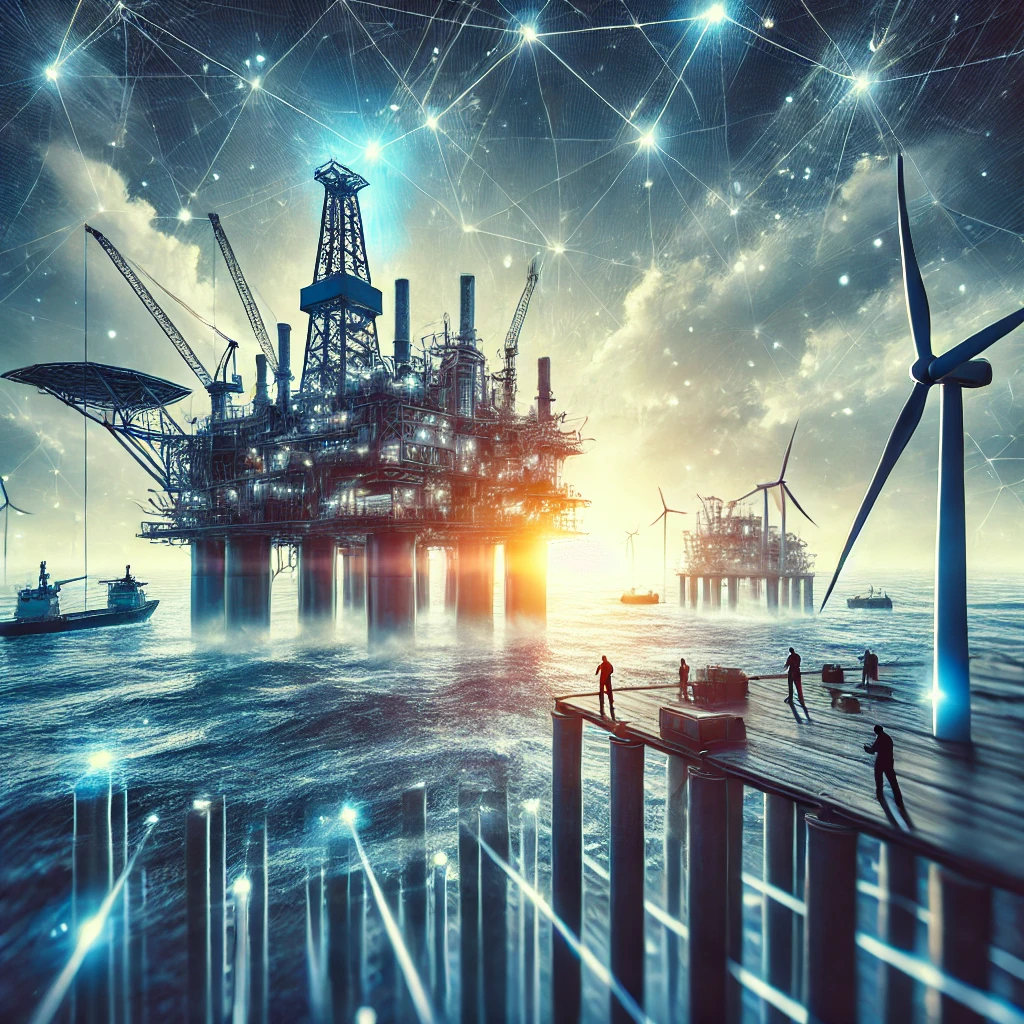Introduction
Imagine standing on the shore and looking out over the vast, deep blue sea. Beneath that ocean lies a world of untapped potential, especially in energy. With global energy demand on the rise and new discoveries being made deep under the ocean floor, we’re looking toward innovative ways to harness resources buried in our oceans. Enter deep offshore technology – an industry that’s helping us go where no drilling equipment could ever reach just a few decades ago. In this blog, we’ll dive into what deep offshore technology is, how it works, the benefits and challenges, and the exciting future it holds.
What is Deep Offshore Technology?
Deep offshore technology encompasses the tools, techniques, and systems used to explore, drill, and produce resources like oil and gas from the ocean’s depths. But this isn’t your ordinary coastal drilling setup; we’re talking about platforms, pipelines, and systems that can operate thousands of feet below the ocean’s surface, in high-pressure environments that would crush traditional equipment.
Advances in deep offshore technology have made it possible to reach depths of 10,000 feet or more, unlocking resources once thought impossible to extract. These innovations bring vital energy sources to our everyday lives, but there’s more to the story – it’s not just about technology; it’s about pushing boundaries and going deeper and safer than ever before.
Why is Deep Offshore Technology Important?
As we move further into the 21st century, the demand for energy only continues to grow. Deep offshore reserves hold some of the largest unexplored resources, particularly for oil and gas. Traditional oil fields are depleting, and deep offshore technology provides a way to tap into new reserves that could help meet global energy needs.
Besides supplying energy, deep offshore technology is essential for energy security. Relying too heavily on specific regions or types of resources can be risky, so finding new sources can stabilize the energy market and ensure more reliability.
The Key Components of Deep Offshore Technology
Understanding deep offshore technology becomes easier when we break down the critical components involved. Here’s a look at the major parts:
1. Drilling Rigs and Platforms
Floating Rigs: These platforms float on the ocean’s surface and are anchored to the seabed. They can handle drilling in deep water and ultra-deep water.
Submersible Rigs: Designed for shallower depths, these rigs are partially submerged in water and are particularly stable in challenging water conditions.
2. Subsea Production Systems
These are underwater systems placed directly on the seabed, allowing extraction of oil and gas without the need for above-water infrastructure. Subsea production is critical for working in harsh deep-sea environments.
3. Remote-Operated Vehicles (ROVs)
ROVs are essentially underwater robots operated from the surface. Equipped with cameras, lights, and robotic arms, they perform tasks like repairs and inspections, going to depths that humans simply can’t.
4. Pipelines and Transport Systems
Extracted resources are moved from deep underwater wells to onshore processing facilities. Pipelines are specially designed to withstand high pressures, and technologies like flexible risers are used to connect the seabed to the surface equipment.
5. Safety and Monitoring Systems
Deep offshore environments can be hazardous, so cutting-edge safety systems are essential. Technologies like real-time monitoring, pressure management, and emergency shut-off systems help keep operations safe and efficient.
The Benefits of Deep Offshore Technology
Investing in deep offshore technology has led to several important benefits. Here’s what makes it so valuable:
Increased Energy Access: Deep offshore reserves open up vast energy resources, helping meet rising global demand.
Economic Growth: Offshore projects create jobs, boost related industries, and contribute to economic development.
Energy Independence: Access to more diverse sources reduces dependency on any single region, providing stability and control over energy supply.
Environmental Innovations: Advanced technology has introduced better ways to minimize the environmental impact, from cleaner energy sources to advanced oil-spill prevention systems.
Challenges Facing Deep Offshore Technology
While deep offshore technology offers significant advantages, it doesn’t come without challenges:
High Costs: Deep offshore drilling and production are expensive. Developing and maintaining equipment that can handle the ocean’s pressure and temperature extremes requires substantial investment.
Environmental Risks: Any spill or malfunction in a deep offshore environment can lead to severe environmental damage. Mitigating these risks requires rigorous safety protocols and innovative technology.
Technological Limitations: Operating thousands of feet underwater is no easy feat. Equipment failure or technical issues can lead to costly delays or accidents.
Extreme Conditions: The pressures and temperatures at great depths make it challenging to maintain equipment and ensure the safety of operations.
The Future of Deep Offshore Technology
With further advancements on the horizon, the future of deep offshore technology looks promising. Here are a few ways this technology is expected to evolve:
Improved Robotics: Next-generation ROVs and autonomous underwater vehicles (AUVs) will perform tasks with higher precision and lower risk, allowing for safer and more efficient operations.
Better Environmental Safety: New systems are being developed to monitor and control potential environmental impacts more effectively, like spill detection and response systems.
Renewable Energy Integration: As the world moves toward sustainable energy, offshore platforms may play a role in harnessing wind and wave energy, turning some drilling structures into dual-use facilities.
AI and Real-Time Data: Artificial intelligence and machine learning could transform the industry by predicting potential issues, optimizing resources, and improving safety through real-time data analysis.
Deep offshore technology is pushing boundaries, breaking barriers, and setting new standards in how we access energy from the depths of the ocean.
Conclusion
Deep offshore technology isn’t just about exploring the unknown; it’s about transforming the way we think about energy, the environment, and our future. While it faces challenges, its benefits are profound, offering a pathway to new resources and greater energy security. The future is bright for this field, and with continued innovation, we may see even more remarkable achievements in the years to come.
—
FAQs
Q1: How deep is “deep offshore” for drilling purposes?
A: Generally, deep offshore drilling is considered anything over 1,500 feet deep. Ultra-deepwater drilling extends to depths of 10,000 feet or more.
Q2: What types of resources are found through deep offshore technology?
A: The main resources extracted are oil and natural gas, but some research is being conducted into mineral extraction from the ocean floor as well.
Q3: How does deep offshore technology impact the environment?
A: While there are environmental risks, technological advances like spill prevention, real-time monitoring, and emergency shut-off systems are designed to minimize the impact.
Q4: What are some examples of safety measures in deep offshore technology?
A: Safety systems include real-time monitoring, emergency shut-off valves, advanced pressure management, and robust environmental sensors.
Q5: Will renewable energy affect deep offshore drilling?
A: Yes! The push for renewable energy has led to some offshore rigs exploring renewable sources like wind and wave energy, potentially transforming some structures into multi-purpose energy platforms.
With innovations leading the way, deep offshore technology will likely continue playing a vital role in the global energy landscape. Whether it’s providing essential resources or potentially integrating renewables, this technology showcases human ingenuity at its finest.









